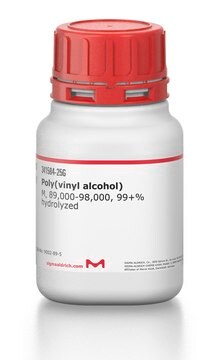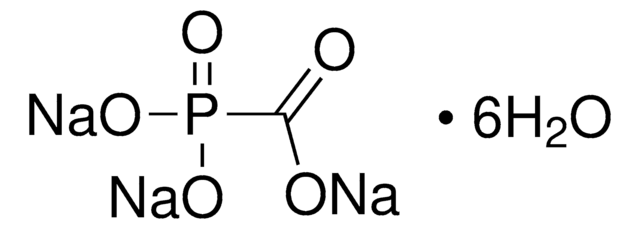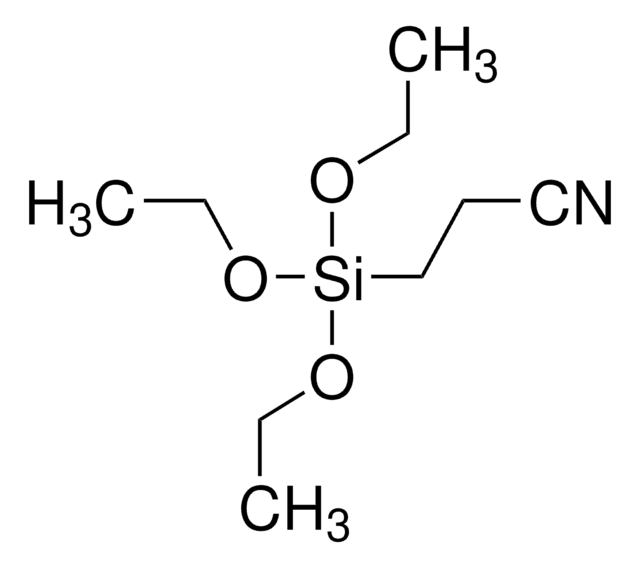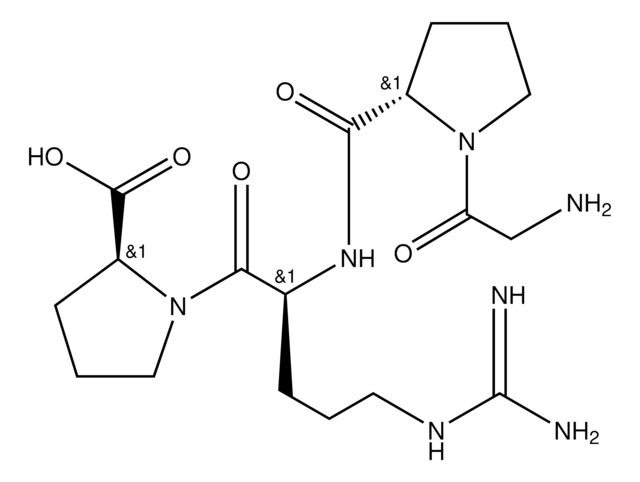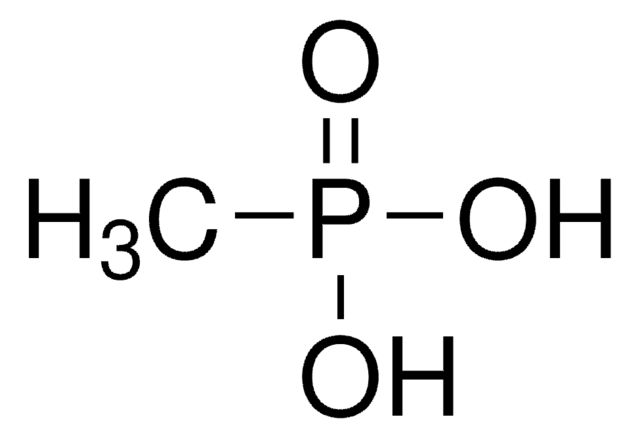435716
3-(Trihydroxysilyl)propyl methylphosphonate, monosodium salt solution
50 wt. % in H2O
Synonyme(s) :
Sodium 3-trihydroxysilylpropyl methylphosphonate
About This Item
Produits recommandés
Forme
liquid
Niveau de qualité
Concentration
50 wt. % in H2O
Impuretés
4 wt. % methyl alcohol
4 wt. % other silane-based salts
5 wt. % sodium methyl methylphosphonate
Densité
1.252 g/mL at 25 °C
Chaîne SMILES
[Na+].CP([O-])(=O)OCCC[Si](O)(O)O
InChI
1S/C4H13O6PSi.Na/c1-11(5,6)10-3-2-4-12(7,8)9;/h7-9H,2-4H2,1H3,(H,5,6);/q;+1/p-1
Clé InChI
MKAWPVONNWUREJ-UHFFFAOYSA-M
Application
- near-infrared dye-doped nanoparticles (NPs)
- as single silica source for the fabrication of phosphonate-rich organosilica layered hybrid material (PSLM)
- Gd/SiO2 nanoparticles
- mesoporous silica nanoparticles
- CdSe/ZnS/silica functionalized nanocrystals
Mention d'avertissement
Warning
Mentions de danger
Conseils de prudence
Classification des risques
STOT SE 2
Organes cibles
Eyes,Central nervous system
Code de la classe de stockage
10 - Combustible liquids
Classe de danger pour l'eau (WGK)
WGK 3
Point d'éclair (°F)
174.2 °F
Point d'éclair (°C)
79 °C
Faites votre choix parmi les versions les plus récentes :
Déjà en possession de ce produit ?
Retrouvez la documentation relative aux produits que vous avez récemment achetés dans la Bibliothèque de documents.
Les clients ont également consulté
Notre équipe de scientifiques dispose d'une expérience dans tous les secteurs de la recherche, notamment en sciences de la vie, science des matériaux, synthèse chimique, chromatographie, analyse et dans de nombreux autres domaines..
Contacter notre Service technique



